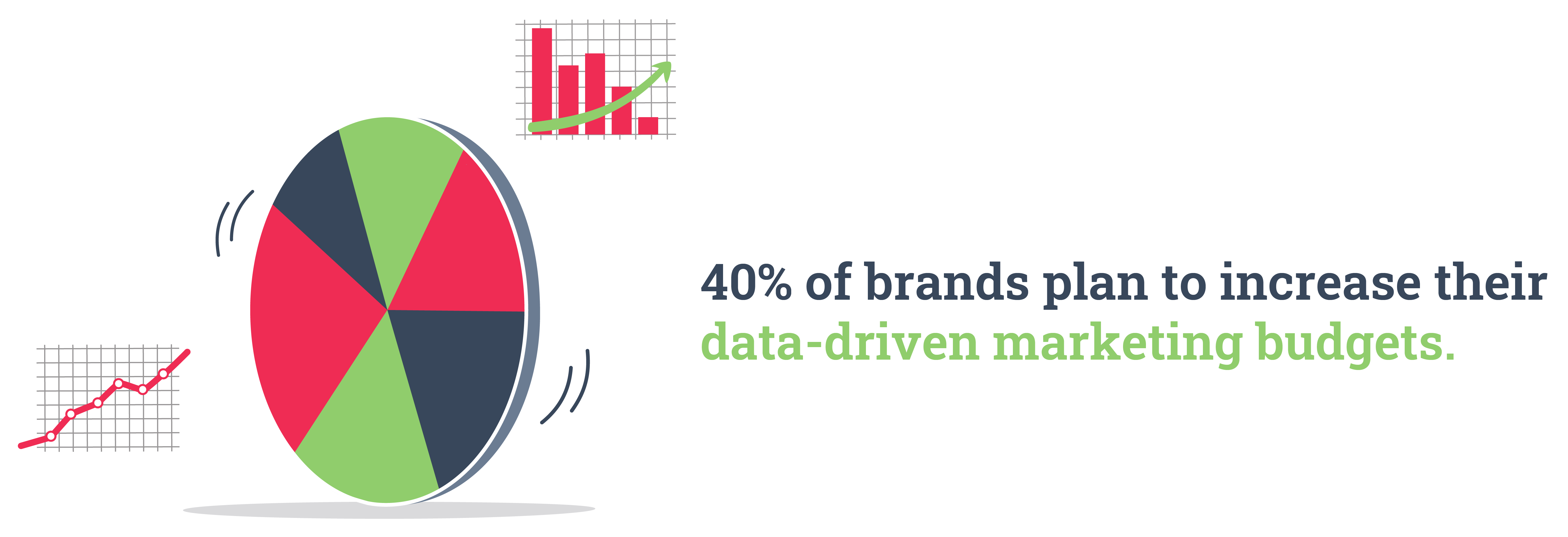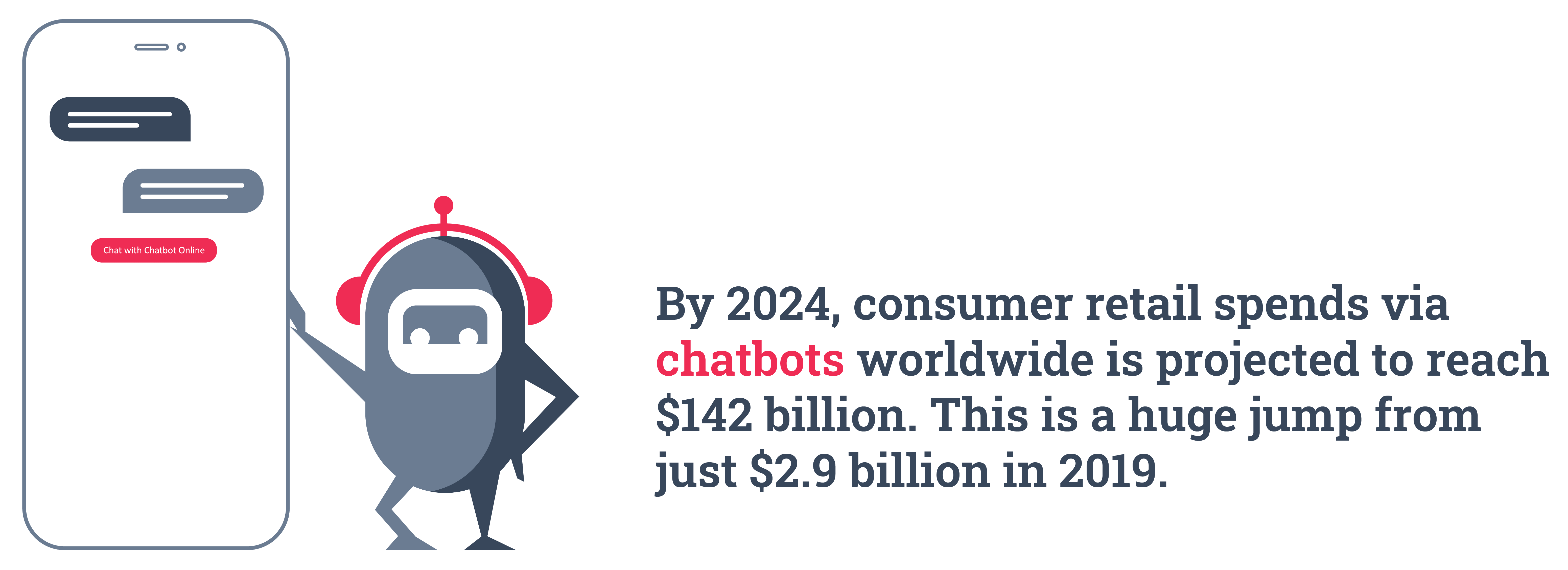4 Marketing Trends Incoming in 2022
It’s no secret that the COVID-19 pandemic has changed the state of play for marketers irreversibly, with society covering a “decade in days” with regards to digital adoption.
Consumer attitudes have shifted, demand has changed and marketing has had to be adaptable above all else. In fact, 70% of marketers have reported major adjustments to their strategy due to the pandemic. Although we’ve seen some degree of normality in 2021, markets are still unpredictable making it increasingly difficult to plan for the year ahead.
This is obviously a challenge, however not impossible considering the trends we have seen in the past as well as the wealth of industry data available.
2020 saw the mass movement of businesses into the online space, and by 2021, almost all surviving businesses had some digital elements in their strategy. These trends are only showing signs of growing which begs the question, what can we expect for 2022?
A simple Google search on the topic is overwhelming, with lengthy lists and overly complicated predictions that incite panic more than anything else. Therefore we have done the research for you and put together our simple overview of the top four marketing trends to expect in 2022 and, more importantly, how to leverage these in your strategy.
Getting to grips with your data
It’s safe to say that most businesses in 2021 recognise the value of their data. Even the smallest independent operators will be tracking customers and revenue in some shape or form. Although this may have been adequate in the past, it’s clear that having an in-depth understanding of your data and using it to make evidence-based decisions has become fundamental to success in the digital era.
Business intelligence (BI) made waves in 2021. Businesses began moving from traditional spreadsheets to more dynamic and sophisticated solutions that enabled them to drill down into their data. So much so, that the BI market is projected to reach $39.35 billion by 2027.
Put simply, BI is a technology-driven process that leverages information from software to transform and deliver data into actionable insights. These insights are the combination of processes and tools used to inform and guide a company’s strategic business decisions.
Modern BI makes analysis simple. Everyone within an organisation, no matter the experience, can visualise data through the creation of personalised reports and dashboards that incorporate the metrics that matter.
BI is an incredibly valuable tool for businesses. It ensures anyone can understand their data, recognise trends, and make strategic decisions easier than ever before. Interestingly, it was found that businesses that use data-driven strategies drive five to eight times as much ROI as businesses that don’t.

Source: Invoca
However, although many organisations recognise the importance of BI and the results it garners, a large number of businesses are not managing this data efficiently and experiencing the common issue of information overload. NewVantage Partners recently reported that 98.6% of executives indicate that their organisation aspires to a data-driven culture, while only 32.4 percent report having success.
So if the value of BI is understood why is there such a disconnect?
Firstly, there are countless different metrics a business can measure, and understandably it can be difficult to decipher what is most valuable and lucrative. Businesses running into the issue of information overload are simply trying to track too much with no plan on how to use these insights or how to logically store the data.
Secondly, collecting the data is only half the battle. In order to leverage BI in 2022, businesses should highlight key function areas and utilise modern technology to translate this into an easy-to-read format. This will enable those businesses to not only understand their data but make better decisions, faster and, easier than ever before with the confidence that they are supported by relevant customer insights.
Although many have already started investing in BI it’s expected in the year to come that 40% of brands plan to increase their data-driven marketing budgets recognising its importance in the future of marketing.
Content is king
Not only do your customers value authenticity more than ever before, but even Google also prioritises quality content when ranking search results, with tighter restrictions to be introduced in February 2022.
The majority of businesses will have at least considered content as part of their marketing strategy, with 70% of marketers actively investing in content marketing.
Content marketing is the technique of “creating and distributing valuable, relevant and consistent content to attract and acquire a clearly defined audience.” There’s really no limit with content marketing, businesses can create blogs, videos, infographics, podcasts, or guides - whatever makes sense for their audience and the messages they are trying to deliver.
No matter the content type, the key focus should be on value. Businesses need to create pieces that they feel their audience will want to read and download, rather than simply creating content with the sole purpose of SEO. Those businesses creating irrelevant content, stuffed with keywords and poor links will be penalised more harshly in 2022, weakening their keyword ranking.
Content marketing has been around for decades so why are 68% of marketing professionals planning on increasing their budget further this year?
The short answer is it works.
Marketers have found that in creating consistent and quality content they can attract more relevant leads as well as build up site authority. Businesses have recognised that creating effective and well-thought-out content can be much more cost-effective and lucrative than traditional marketing methods.
Particularly in a time when authenticity is a top priority for consumers, content marketing helps to convey brand values in a genuine and credible format. Also with the constant changes to Google's algorithm, marketers need to adapt and evolve their strategy to avoid being penalised.
The proof is in the data - marketers are now investing a huge amount of time and resources in their content strategies. 60% of businesses reported that they create at least one piece of content a day in 2021.
As mentioned, content can come in any format, length, or style and it is expected that going into 2022, we will see a bigger spend on content marketing, specifically in video and other forms of visual content.
Long-form content has proven incredibly valuable, but finding a means to deliver it in a digestible format, that appeals to readers and keeps their attention, is the new challenge. It’s no secret that consumers, especially those from younger generations, are attracted to visual, immediate content. In 2022 online videos will make up more than 82% of all consumer internet traffic.
It is anticipated that more businesses, both B2C and B2B, will be utilising visual content in a big way, experimenting with going live, 360 degrees, and interactive video.
Although video content has been recognised as one of the most engaging marketing materials, some businesses are still underutilising this channel due to the efforts and costs required. However, this does not always have to be the case. Thanks to the growth of technology, marketers now have the capacity to effortlessly shoot and edit a high-quality video easily using their smartphones, making the possibilities endless.
The new normal of Omnichannel
COVID-19 transformed shopping habits overnight, businesses and consumers were forced into e-commerce whether they had planned for it or not. Initially, having a simple online store was enough, however, with the growth of technology and increase in global competition, consumers have become more demanding than ever. In order to compete, businesses need to start thinking about providing an omnichannel experience.
Omnichannel marketing is the practice of creating a seamless shopping experience for your customers no matter what channel or touchpoint on which they are engaging with your brand. This strategy has not just become popular but is now seen as a requirement with 90% of consumers expecting consistent interactions across channels.
This marketing practice is the evolution of those before it but now puts the customer at the centre of all brand activity. Rather than simply targeting customers on different channels and treating these as separate interactions, with omnichannel marketing, the aim is to allow customers to move between channels as one seamless buying experience. Essentially, whether in-store, online, or on the move, customers expect a consistent and convenient experience that is customised to them.
Omnichannel has been present, particularly with larger brands for years, but the impact of the pandemic has changed consumer behaviour and expectations massively. The everyday consumer now wants a personalised and effortless experience when interacting with any brand, whether this is through personalised content, stored details, or the option for cross-channel integrations or click and collect.
This kind of tailored experience is no longer just a nice to have, but a must, with 40% of customers going as far as to say that they won’t do business with companies if they can’t use their preferred channels.

Source: Salesforce
Aside from keeping consumers happy, omnichannel marketing has a number of other benefits such as eradicating data silos, increasing revenue, and accessing a wealth of consumer data. Although we have seen some businesses reverting to their pre-pandemic operations, omnichannel is definitely more than a passing trend. In fact, 74% of retailers have either started on their omnichannel strategy or have already implemented it.
In a world with increasing global competition, consumer loyalty is depleting with 67% admitting they are quick to avoid brands with inconvenient and tedious buying processes. It’s clear that the key to success in 2022 is omnichannel.
Conversational communication
With the eruption of digital marketing, more and more brands have been jumping on the conversational marketing bandwagon. The popularity of chatbots and social commerce, in particular, has exploded with both consumers and retailers.
Conversational marketing is exactly what it says on the tin. It’s designed to make consumers feel at ease, building relationships and creating authentic personal experiences. This is created through real-time conversations intended to guide customers through the buyer's journey rather than using conventional lead capture forms and ads.
Conversational marketing has become incredibly popular in recent years. 79% of businesses that have exceeded their revenue goals give credit to a conversational marketing strategy. This was especially evident after the pandemic, where many businesses were quickly forced to refocus their strategy and find new, more personal ways to communicate with customers whose priorities have shifted.
One of the most popular forms of conversational marketing, and one that is expected to grow further in 2022, is chatbots. Chatbots have seen a 400% growth since 2017, with retail spending via this channel projected to reach $142 billion by 2024.
Chatbots give consumers the immediacy they have come to expect in their customer service interactions, with help available 24/7. In the past, chatbots were avoided due to their slow and often, unhelpful, irrelevant suggestions. However, thanks to the advancement of AI, these conversational tools have become more seamless and customised than ever before. As a result, only 12.8% of consumers report having had a negative experience using chatbots, with 68% liking the fact they were able to get answers quickly, no matter the time.

Source: Threesixtee
As the use of chatbots continues to rise, we expect 2022 to bring the implementation of dynamic and smart technology to create an even more personalised experience for customers. Such trends include the use of voice bots, as well as the ability to interpret emotion to create an empathetic and more human-like experience.
Another key conversational marketing strategy is the use of social media to directly engage with consumers through comments or direct messaging. Particularly with younger generations, social media is often one of their first touchpoints when trying to contact a brand or learn about their offering.
The importance of social media cannot be ignored, with 74% of millennials saying that their perception of a brand actually improves if the company responds to them on social media. Social channels were created to allow the public to communicate freely and therefore, it’s only natural that this would spill into business communications.
In 2022 it’s expected that social media will continue to grow and remain a significant factor in digital marketing strategies. Consumers today are quick to switch from brands that they feel do not uphold their values or offer a tailored experience. 72% of B2B customers expect a deep understanding of their needs, reflected through personalised experiences.
Social media offers the opportunity for brands to inject more personality into their communications, adding humour or speaking more candidly than they would on other channels. As well as this, social media has become smarter, allowing businesses to retarget and reach more relevant global audiences who are actually interested in what they do.
It’s clear that conversational marketing has proven a worthwhile area for businesses to focus efforts in 2022 and already shaping up to be one of the most influential trends of the decade so far.
Conclusion
If the last two years have taught us anything, it’s that it’s never easy to predict the year ahead. Although many things are out of our control, what we can do is analyse the data, engage audiences and build strategies that are adaptable. The trends predicted, although subject to change, have proved to be effective and lucrative for businesses. In 2022 you should invest in BI, conversational marketing, and omnichannel selling, as well as creating high quality, visual content, in order to build a full-proof marketing strategy that allows you to stay ahead of your competition and drive growth.
Share this
You May Also Like
These Related Stories

The Top Marketing Trends of 2023

Top Marketing Trends 2024: Future Insights and Predictions



